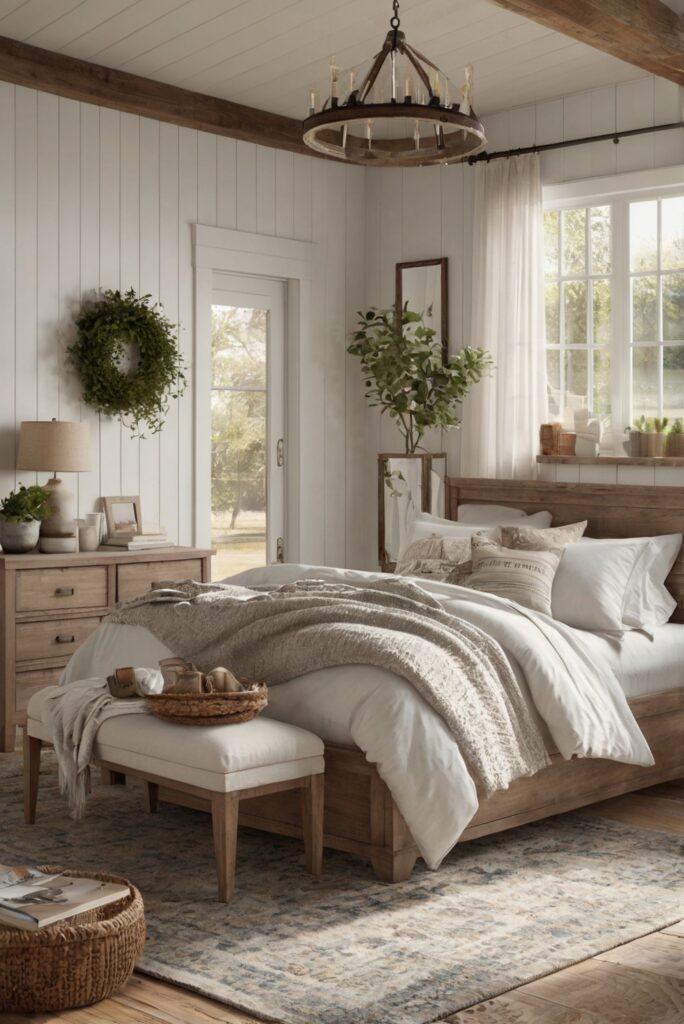Discover the essential steps to creating a bedroom oasis for maximum relaxation. Transform your space with interior designer secrets and decor tips.
To design a bedroom for optimal relaxation as part of your home decorating routine, consider the following ideas: Start by decluttering and organizing the space to create a calming environment. Choose a soothing color palette for the walls and furniture, such as neutral tones or pastel shades. Incorporate elements like comfortable bedding, soft lighting, and cozy rugs to promote relaxation. Utilize space planning techniques to make the room feel open and inviting. Add personal touches like artwork or decorative pillows to enhance the atmosphere. Consider the power of scent by using candles or essential oils for aromatherapy. Ensure proper insulation and ventilation for a comfortable room temperature. Incorporate elements of nature, such as plants or natural materials, for a relaxing ambiance. Focus on creating a serene bedroom that promotes rest and rejuvenation.
How to Design a Bedroom for Optimal Relaxation?
1. Choose a Calming Color Palette:
When designing a bedroom for optimal relaxation, color plays a crucial role. Opt for calming colors like soft blues, greens, and neutrals. These hues have a calming effect on the mind and promote relaxation. Avoid bold and bright colors as they can be stimulating and disrupt your sleep.
2. Invest in Quality Bedding:
Quality bedding is essential for creating a relaxing bedroom environment. Opt for soft, breathable fabrics like cotton or linen. Invest in a comfortable mattress and pillows that provide adequate support to ensure a good night’s sleep.
3. Declutter and Organize:
A cluttered bedroom can contribute to feelings of stress and anxiety. Declutter and organize your space to create a calming atmosphere. Use storage solutions like baskets and bins to keep things organized and out of sight.
Incorporating Natural Elements:
Creating a Cozy Reading Nook:
When designing a bedroom for optimal relaxation, incorporating natural elements can enhance the calming atmosphere. Plants can help purify the air and bring a sense of peace and tranquility to the space. Consider adding a small indoor plant or a vase of fresh flowers to your bedroom.
To create a cozy reading nook in your bedroom, choose a comfortable chair or chaise lounge where you can relax and unwind with a good book. Add a soft throw blanket and some ambient lighting to create a cozy atmosphere. This dedicated space can be a sanctuary for relaxation within your bedroom.
In conclusion, designing a bedroom for optimal relaxation involves careful consideration of color, bedding, organization, and the incorporation of natural elements. By creating a calming and clutter-free environment, you can promote relaxation and improve your overall well-being. Consider implementing these tips and strategies to transform your bedroom into a peaceful retreat where you can unwind and recharge.
What are the key elements to consider when designing a bedroom for optimal relaxation?
When designing a bedroom for optimal relaxation, it is essential to focus on creating a calming and soothing environment. Key elements to consider include choosing a soothing color scheme, incorporating soft lighting, selecting comfortable bedding and furniture, and minimizing clutter. These elements can help create a serene atmosphere that promotes relaxation and restful sleep.
How can the layout of the bedroom contribute to a relaxing atmosphere?
The layout of the bedroom plays a crucial role in promoting relaxation. Placing the bed in a central, focal point of the room can create a sense of balance and harmony. Additionally, ensuring there is adequate space around the bed and incorporating natural elements such as plants can enhance the overall ambiance of the room.
What role does lighting play in designing a relaxing bedroom?
Lighting is a key factor in creating a relaxing bedroom environment. Soft, warm lighting can help to create a cozy atmosphere, while dimmer switches or adjustable lighting fixtures allow for customizable brightness levels. Natural light is also important, as it can help regulate the body’s circadian rhythm and promote better sleep.
How can the choice of colors and textures impact the relaxation levels in a bedroom?
The choice of colors and textures in a bedroom can have a significant impact on relaxation levels. Cool, calming colors such as blues and greens are known to promote relaxation, while soft textures like plush rugs and cozy blankets can create a sense of comfort and coziness. By carefully selecting colors and textures that evoke feelings of calm and tranquility, you can enhance the relaxation potential of your bedroom.
What are some additional tips for designing a bedroom that promotes optimal relaxation?
Some additional tips for designing a bedroom for optimal relaxation include incorporating aromatherapy with essential oils, adding personal touches such as photos or artwork that bring joy, and ensuring proper ventilation and air quality. Creating a technology-free zone and establishing a bedtime routine can also help signal to your body that it’s time to relax and unwind.

